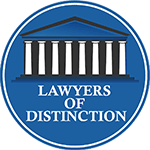The Blanch Law Firm’s Criminal Health Care Fraud Practice has over 15 years of experience defending criminal charges related to “upcoding.”
If you are facing charges related to upcoding or are currently under investigation by a government agency for health care fraud, call the number at the top of this page and schedule a free confidential consultation today.
What is “Upcoding?”
“Upcoding” is a form of overbilling. Coding systems are used to correlate different procedures, visits, and issues with their associated costs. A patient has an appointment, a provider assigns a code, and a bill produces.
Upcoding, or the intentional coding of more complex and ergo, more expensive procedures, is a severe form of medical fraud. However, not every instance of erroneous billing is a result of criminal behavior. The intent of the medical professional in issuing the codes is essential in the interpretation of this crime.
Upcoding is the first step in overbilling a consumer and comes in a couple of forms.
Example
Let’s say a consumer comes into the office for a medication check that lasts ten minutes, and it gets coded as a full physical at sixty minutes. The physical is more complicated than the medical check, and both are at different price points. Coding the visit as a physical for the sake of being paid more is Upcoding.
Element of “Intent”
It is important to remember if you are facing these allegations, that an incorrect bill alone does not constitute upcoding.
- Did you intentionally miscode the bill with a more complex procedure to be paid more?
- Could the process reasonably have been coded the way that it was?
- Did you take one issue and separate it into several to be paid more?
These questions will be paramount in building your defense as they determine your intent during coding.
“Unbundling”
Another component of Upcoding is called “Unbundling.”
Going from the previous example, let’s say a patient did go in for an actual physical, and her doctor noted that her blood pressure was high. He set a follow up for the next day to check her numbers.
Typically, this follow-up is coded as part of the original issue, with the physical, at a lesser cost. Instead, the doctor separated these two things on the billing and coded it as two visits so that he would get paid for both at a higher cost. Because he intended to overcharge the customer, this is a case of unbundling and is a form of billing fraud.
Statutes Related to “Upcoding”
#1. The Federal False Claims Act
The False Claims Act (31 U.S.C. §§ 3729 to 3733) defines false claims or medical billing fraud, under which upcoding falls, as “any person or entity knowingly presenting a fraudulent claim for payment or approval.”
This is the broadest legal verbiage for upcoding.
#2. New York State Law Social Services Law § 366-b
& NYPL Articles 155 and 175-177.
Upcoding is also punishable under New York State Law Social Services Law § 366-b and New Your State Penal Law Articles 155 and 175-177.
Upcoding can be a misdemeanor or a felony under Federal and New York State Laws, depending on the severity and monetary value of the offense.
Penalties for “Upcoding”
If convicted of upcoding, you could face several penalties depending on the nature and severity of the crime.
False Claims Act Penalties
Under the False Claims Act can most upcoding crimes lead to incarceration up to five years and fines worth up to $250,000.
New York State Penalties
Each state has additional penalties. For example, in New York, upcoding is a misdemeanor or felony with varying degrees of punishment dependent upon the amount of money that was obtained illegally and is laid out as follows:
- Fifth degree – Misdemeanor, Under $3000 in a year
- Fourth degree – Class E felony, Over $3000 in a year, no jail but up to 4 years of probation
- Third degree – Class D felony, Over $10,000 in a year, no jail but up to 7 years of probation
- Second degree – Class C felony, Over $50,000 in a year, no jail but up to 15 years of probation
- First degree – Class B felony, Over $1,000,000 in a year, Minimum one year in jail, maximum 25 years in jail
Mitigating and Enhancing Factors
Under the False Claims Act, the maximum sentence for health care fraud is ten years.
However, those numbers are subject to change if there are mitigating factors. While any number of factors will impact sentencing, there are a few that are set in stone.
- If a patient was seriously injured by the fraud, such as subject to an unnecessary treatment that put the patient at risk, that sentence could jump to twenty years maximum jail time.
- If the crime resulted in death, that maximum is no longer applicable, and the defendant will face up to life in prison.
Some other things that can happen…
While obviously, the first concern with an upcoding charge is incarceration and fines, there can be other unpleasant consequences of such a conviction. You could have your medical license suspended or even revoked, lose your reputation as a provider or face civil suits.
Legal Elements of “Upcoding”
A defense to these charges is built around the elements of the laws described above.
Below are the elements that the prosecution has to prove for you to be found guilty.
The Elements of Upcoding include:
- The defendant introduced a claim that was false, improper, or fictitious.
- The defendant knew that the claim was false, improper, or fictitious.
- The defendant acted with the intent to break the law, whether by calculated action or gross negligence.
But what does that mean for you, specifically? Let’s look at the nuances of these elements individually.
Element #1: The Act
Definition: “Any person who knowingly presents, or causes to be presented, a false or fraudulent claim for payment or approval.” (False Claims Act)
Explanation: The question here is not of intent or knowledge of the ramifications; it is merely asking if it happened. Of the three elements, this is the easiest to prove. The question is really, “Did you turn in a claim that was wrong and overbill the consumer?”. Likely, if you are being accused of upcoding, this is where the charge began.
Case: In the case of United States ex rel. Integra Med Analytics, L.L.C. v. Baylor Scott & White Health, et al. the action of alleged overbilling was shown by the whistleblowers at Integra Med Analytics, producing evidence that Baylor Scott & White had appeared to overbill patients over 62 million dollars over nine years.
Example: The first element that would need to be proven is that overbilling occurred. This proof could be as simple as a log of the bills she had received and their associated codes. It could also be more advanced such as the Integra case, where the data of a significant number of people is presented.
Element #2: Knowledge
Definition: “Any person who knowingly makes, uses, or causes to be made or used, a false record or statement material to a false or fraudulent claim.”
Explanation: Here you will find yourself in more muddled waters. While “Did it happen?” is cut and dry, “Did you know it happened?” is a bit more complicated. This element of the crime is where it will be beneficial to you that billing is a multifaceted endeavor with many hands in the pot. It is the burden of the defense to prove that not only did the upcoding happen, but you also were aware that it was happening and submitted it anyway.
Case: In the previous case of Integra Med Analytics v. Baylor Scott and White, the prosecution and whistleblowers claimed that Baylor Scott and White perpetuated the fraud by coaching their doctors to use specific keywords that would allow visits to code at a higher rate. The prosecution also alleged that they carried lists of secondary codes to bring to each visit to find more to bill on. In this way, it was clear that the defense was aware of the coding practices.
Example: Thinking back to the example provided above, imagine that a patient had provided extensive documentation to show that she was coded for physicals when she only had medicine checks. She would now need to prove that her doctor was aware he was billing her higher. Training records, doctor’s memos, other patient files can is used for this purpose.
Element #3: Intent
Definition: “Anyone who conspires to commit a violation of [the terms of fair billing listed in the False Claims Act]”
Explanation: This is the crucial and hardest to prove element. If they have established that overbilling happened and that you were aware that it happened, the question becomes, “Did you do it with the intent of illegally padding a bill?”. Like was said before, a high bill is not a crime on its own. It becomes a crime when you knowingly upcode an invoice with the intent of defrauding the consumer or institution.
Case: In the case of Baylor Scott and White, this element was the nail in the persecutions coffin. They could prove that seemingly excessive billing happened and that the defendant was aware of it, but they could not verify that they intended to defraud anyone. While the evidence showed that the hospital was maximizing its efforts to bill the customer to the fullest extent, there was no evidence to say they did so with malicious intent. They did not bill for medical procedures that did not happen but billed multiple codes for each event. Each code was technically proper, though perhaps more than a typical statement.
Example: If a patient had thus far proven the action and knowledge of upcoding, she would now need to prove intent. Testimony of a billing and coding representative stating illegal directives with substantiated evidence to support their claim would be one way of showing her doctor acted with the intent of defrauding her.
One more thing…
It is not a crime to maximize one’s ability to be paid for services rendered and with little else to support the other allegations made in the case United States ex rel. Integra Med Analytics, L.L.C. v. Baylor Scott & White Health, et al., it was quickly dismissed.
What Other Offenses Are Related to “Upcoding?”
Upcoding hangs out with most of the other forms of Medical Billing Fraud, but the most common are Unbundling and Billing for Services not provided.
#1. Unbundling
- Unbundling is separating billed services intended to be coded together with the intent of charging each at a higher rate and overbilling the consumer.
- In other words, some office visits have more than one issue that is billed together as one visit. If you came for each item at two separate appointments, they would charge separately, and the provider would make more money than when they are together.
- Example – A woman visits her Gynecologist for a yearly exam in which she receives a pap smear and a breast exam. These two things bill as one. If her doctor billed the breast exam and the Pap smear each individually, she would be charged more. This is unbundling.
#2. Billing for Services not Provided
- Billing for Services not Provided is producing a bill for an item or issue that never occurred.
- In other words, this is billing and coding for made-up work.
- Example – A patient’s doctor bills her physical breast exam as a mammogram for additional monetary gain. The test never happened, so it is billing fraud.
Additional Cases and Statutes That May Impact Your “Upcoding” Case:
Case law solidifies many nuances of broader and vaguer codes. Here are some significant cases concerning upcoding:
United States ex rel. Bennet v. Medtronic, Inc., 747 F. Supp. 2d 745, 783 – This case demonstrates the standard that there is a difference between a hospital enjoying the full profit of their services and committing billing fraud. This is a critical case in defense of upcoding as it relates to intent and shows that a history of high billing alone does not constitute a crime.
Bell Atl. Corp., 550 U.S. at 567–69 – Eliminates the use of most circumstantial evidence in Upcoding cases as it establishes that if there is a reasonable legal explanation for the behavior, then it cannot be assumed for the worst. This was used in the dismissal of the Baylor Scott and White case to show that the appearance of higher billing was not enough to assume a crime when the reasonable explanation was maximizing hospital income.
Federal Rules of Civil Procedure (FRCP) Rule 9(b)- Rule 9(b) can be the defense’s best friend in fraud cases. This rule is also called “heightened pleading,” and it forces the prosecution to establish the who, what, when, where, and how from the immediate outset of the case. If the prosecution cannot show that they know all of the elements of the alleged crime, which may be challenging to understand at the outset of a case, it can be cause for dismissal.
18 U.S.C. § 1347- The criminal healthcare fraud statute. This is the statute that makes healthcare fraud, such as upcoding a criminal offense. This statute imposes hefty punishment for the crime.
Detecting and Prosecuting “Upcoding”
Upcoding and other forms of medical billing fraud cost insurances millions of dollars each year, so it is no wonder that detecting, investigating, and prosecuting these crimes are a priority to many departments and individuals. A few to be aware of are:
- Whistle-Blowers
- Data Miners
- The Department of Justice
- Medicare, Medicaid, and Tricare
Whistleblowers
Whistle-Blowers and the Qui Tem lawsuit are the most significant incentive to report upcoding. In these precise legal accusations, the person reporting the crime stands to be awarded massive amounts of money if their claim successfully convicts a perpetrator of fraud and results in the recovery of assets lost to it.
It is vital for both the whistleblower and the accused to seek legal counsel as soon as the claim arises as there are particular procedures in filing such a case. If the process is mishandled, this is an asset to the accused in possibly having the case dismissed. Whistleblowers can be anyone from consumers to billers to other doctors or insurance employees.
Data Mining
Technology is ever more involved in billing each year and can run statistics in an instant. If odd bills are produced, data can be pulled in an instant to show red flags. It is often the first indication of upcoding and used as evidence in a fraud case.
The Department of Justice (“DOJ”)
The Department of Justice is a vast entity in the detection, investigation, and persecution of fraud cases. There is an entire division, aptly named the Health Care Fraud Unit, that works hand in hand with the attorney’s general offices and civil fraud groups. The sole purpose of this unit is to persecute fraud cases, and they are experts in the field.
Other groups that work with the Department of Justice are the Medicare, Medicaid, and Tricare Fraud, divisions. Typically, these groups detect and investigate while the Health Care Fraud Unit prosecutes.
Legal Defenses of “Upcoding”
So, what can you do to avoid these convictions? Upcoding has many robust legal defenses. Let’s talk about some of the more common ones that can serve most cases.
#1. Best billing, not upcoding
In other words, you can acknowledge that your invoice is higher than the norm, but much like many cases before yours—you are merely maximizing your billing rather than perpetrating fraud.
- Case example: United States ex rel. Bennet v. Medtronic, Inc., 747 F. Supp. 2d 745, 783
- Scenario: Patients are charged $120 for a physical while other doctors in the area charge $100. You are accused of upcoding, but you can explain your code usage in such a way that shows you have used more codes, but they are all applicable to the exam.
#2. Insufficient information
For whistleblower cases, especially, there is a powerful legal procedure in properly filing an upcoding claim. Failure to do so will result in the dismissal of the case.
- Case example: United States ex rel. Integra Med Analytics, L.L.C. v. Baylor Scott & White Health, et al
- Scenario: A patient alleges that you have been upcoding to defraud consumers. She presents her case without properly asserting at least one of the “who, what, when, where, and how” questions of the details of the crime. The case is dismissed, lacking proper procedure.
#3. There was no intent to defraud
This is a prevalent argument. Case law insists that if there is a reasoning that is simple and legal for what has occurred, then that is what is assumed to have been the reason. Even if higher billing is present, it is not assumed that the intent was criminal. The intent is quite challenging to prove.
- Case example: United States ex rel. Integra Med Analytics, L.L.C. v. Baylor Scott & White Health, et al
- Scenario: A patient proves that her bills and others’ bills are high but has no proof that they were elevated with malicious intent. The case is dismissed.
Let Us Help You Today.
The moment you are charged with upcoding is the moment to involve a lawyer. Your lawyer can help you navigate the complex procedures of billing and health care law. They can also handle your interactions with investigators and help keep you out of serious trouble. While you may know the legalities involved in your charges, an attorney can help you with the best strategies for your particular case.








